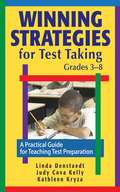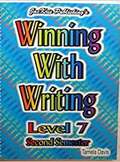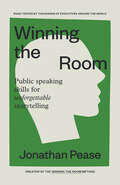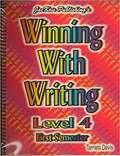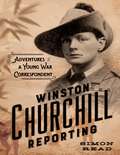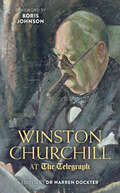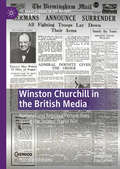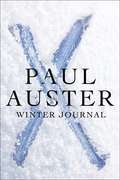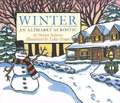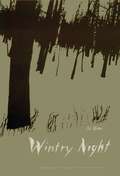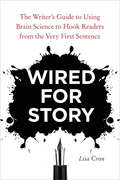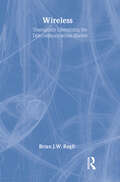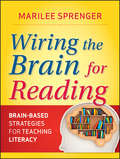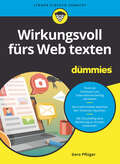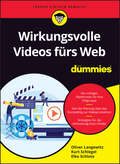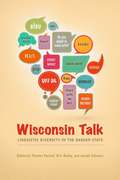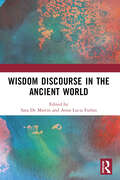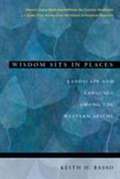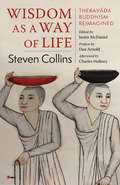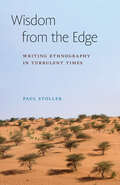- Table View
- List View
Winning Strategies for Test Taking, Grades 3-8: A Practical Guide for Teaching Test Preparation
by Linda Denstaedt Kathleen Kryza Judy Cova KellyWinning Strategies for Test Taking, Grades 3-8 provides a fun and engaging approach for developing effective test-taking skills in children. Chapters detail the coaching of test thinkers, test-reading strategies, and question-answer strategies.Using various examples, planning guides, and models, the authors explain how to effectively help students prepare for different test formats, including:Reading and analyzing textsMultiple-choice questionsTrue-or-false questionsWriting from a promptThe assessments highlighted in this book will empower students with the ability to choose, to think creatively and critically, and to gain better social skills along the way.
Winning With Writing: Level 7 Second Semester
by Tamela DavisSecond Semester book (18 lessons) Level 7 covers direct, indirect quotations, divided quotations, dialogue, the writing process, thesis statements, transitional sentences, documenting sources, bibliography, creative writing, personal narrative, descriptive writing, persuasive writing, explanatory writing, informational essay, autobiographical essay, cause and effect essay, compare and contrast essay, and research report, among other things.
Winning the Room: Public Speaking Skills for Unforgettable Storytelling
by Jonathan PeaseStoryteller Skills for Speeches, Pitch Meetings, and Everyday Life “Raw, funny and hugely practical—JP shares insights and secrets from decades of helping an incredible range of people tell their story with confidence and style. Now you can too.”—Adam Spencer, Australian comedian, media personality and prolific authorTransform into a powerful public speaker that audiences love! For entrepreneurs, creatives, or anyone who needs to communicate authentically with their audience, Winning the Room is the public speaking book for you.Win in every room. Cultivate an authentic connection with your audience, no matter what. Conquer your public speaking fears, learn how to be likable, how to present for work, how to give compelling pitch meetings, and how to be a person who wins through highly effective communication techniques. Winning the Room teaches public speaking skills applicable to everybody, in any situation. Become a great public speaker with guidance from an expert. Do you get nervous before a presentation? Do you find yourself rambling and losing your point? In Winning the Room, award winning creative and communications director, thought leader, and author Jonathan Pease (JP) uses road-tested techniques to take you on a fun, yet practical journey to becoming a fearless storyteller people buy from—emotionally and financially.In Winning the Room, find:A tight, actionable, and memorable system for how to build trust and be great at different types of public speaking momentsHow to turn nervous energy into passion and charisma that people engage withHow to apply these skills to various settings like keynotes, pitch meetings, presentations, and everyday conversations with friends and familyIf you liked Cues, Everyday Business Storytelling, or Your Story Well Told, you’ll love Winning the Room.
Winning with Writing Level 4 First Semester
by JacKris Publishing"We have designed this thorough program to be user friendly for both teacher and student. This program is arranged in 36 weekly lessons. Lessons 1 through 18 are contained in this First Semester book. Lessons 19-36 are contained in Winning with Writing, Level 4, Second Semester book. Each lesson consists of five exercises labeled Day 1 through Day 5."
Winning with Writing Level 4 Second Semester
by JacKris Publishing"We have designed this thorough program to be user friendly for both teacher and student. This program is arranged in 36 weekly lessons. Lessons 19 through 36 are contained in this Second Semester book. Lessons 1-18 are contained in Winning With Writing, Level 4, First Semester book. Each lesson consists of five exercises labeled Day 1 through Day 5."
Winsome Persuasion: Christian Influence in a Post-Christian World
by Quentin J. Schultze Tim Muehlhoff Richard LangerHow are Christians viewed in the broader culture?Winsome Persuasion
Winston Churchill Reporting: Adventures of a Young War Correspondent
by Simon ReadCombat, cigars, and whiskey--from the jungles of Cuba and the mountains of the Northwest Frontier, to the banks of the Nile and the plains of South Africa, comes this action-packed tale of Winston Churchill's adventures as a war correspondent in the Age of Empire.
Winston Churchill at the Telegraph
by Dr Warren Dockter And Boris JohnsonThis fascinating collection of reportage chronicles the Prime Minister’s life through the newspaper where he began his career.The Telegraph had a uniquely close connection with Winston Churchill at every stage of his life. Beginning with his early days as a war correspondent for the paper, the association continued as he himself became the news—reported on in its pages at every stage of his historic political career.Collected here, for the first time, is the best reportage on this complex man. Unencumbered by the legendary status he would later acquire, there is praise and blame in equal measure: finding space for both dramatic accounts of his wartime premiership and affectionate reports on the animals living at Chartwell, his country estate.The Telegraph was also a happy home for Churchill the journalist, and featured within are many pieces written in his unmistakable prose. Capturing the urgency of the time in which he lived, Churchill at the Telegraph is a celebration of an intimate relationship that lasted over sixty years and shows Winston Churchill in all his paradoxical glory.
Winston Churchill in the British Media: National and Regional Perspectives during the Second World War (Palgrave Studies in the History of the Media)
by Hanako IshikawaThe book explores how Churchill was portrayed in the UK press during the Second World War, comparing his depictions in Scottish, Welsh, Northern Irish, and provincial English newspapers. By using a variety of newspapers from these areas, it examines local opinions about Churchill at the time he was the wartime prime minister. It analyses how Churchill was received and depicted by newspapers in the UK and why differences in these depictions emerged in each area. It contributes to the study of public opinion in the war and of Churchill’s reputation, of the British media, as well as to the study of the notion of Britishness, focusing on local perspectives.
Winter
by Steven Schnur Leslie EvansSleds sailing downhill on newly fallen snow, animals nestled deep in underground burrows, and families gathered hearthside to share the joys of the season are among the alphabet of cold-weather delights celebrated in 26 acrostic poems, alphabetically arranged. The colors and textures of winter-the cool blue of icy ponds and the golden glow of holiday candles-are gloriously captured in linoleum-cut illustrations. A companion volume to Autumn, Spring, and Summer, Winter rounds out the year of seasonal collaborations by Steven Schnur and Leslie Evans.
Winter Brothers: A Season at the Edge of America
by Ivan DoigThe author of This House of Sky provides a magnificent evocation of the Pacific Northwest through the diaries of James Gilchrist Swan, a settler of the region. Doig fuses parts of the Swan diaries with his own journal.
Winter Journal
by Paul AusterFrom the bestselling novelist and author of "The Invention of Solitude," a moving and highly personal meditation on the body, time, and language itself.
Winter: An Alphabet
by Steven SchnurSleds sailing downhill on newly fallen snow, animals nestled deep in underground burrows, and families gathered hearthside to share the joys of the season are among the alphabet of cold-weather delights celebrated in 26 acrostic poems, alphabetically arranged.
Wintry Night (Modern Chinese Literature from Taiwan)
by Qiao LiAn epic spanning more than half a century of Taiwan's history, this breathtaking historical novel traces the fortunes of the Pengs, a family of Hakka Chinese settlers, across three generations from the 1890s, just before Taiwan was ceded to Japan as a result of the Sino-Japanese war, through World War II. Li Qiao brilliantly re-creates the dramatic world of these pioneers—and the colonization of Taiwan itself—exploring their relationships with the aboriginal peoples of Taiwan and their struggle to establish their own ethnic and political identities.This carefully researched work of fiction draws upon Li's own experiences and family history, as well as oral and written histories of the era. Originally published in Chinese as a trilogy, this newly translated edition is an abridgement for English-speaking readers and marks the work's first appearance in the English-speaking world. It was well-received in Taiwan as an honest—and influential—recreation of Taiwan's history before the relocation of the Republic of China from the mainland to Taiwan.Because Li's saga is so deeply imbued with the unique culture and complex history of Taiwan, an introduction explaining the cultural and historical background of the novel is included to help orient the reader to this amazingly rich cultural context. This informative introduction and the sweeping saga of the novel itself together provide an important view of Taiwan's little known colonial experience.
Wired for Story
by Lisa CronThis guide reveals how writers can utilize cognitive storytelling strategies to craft stories that ignite readers' brains and captivate them through each plot element. Imagine knowing what the brain craves from every tale it encounters, what fuels the success of any great story, and what keeps readers transfixed. Wired for Story reveals these cognitive secrets--and it's a game-changer for anyone who has ever set pen to paper. The vast majority of writing advice focuses on "writing well" as if it were the same as telling a great story. This is exactly where many aspiring writers fail--they strive for beautiful metaphors, authentic dialogue, and interesting characters, losing sight of the one thing that every engaging story must do: ignite the brain's hardwired desire to learn what happens next. When writers tap into the evolutionary purpose of story and electrify our curiosity, it triggers a delicious dopamine rush that tells us to pay attention. Without it, even the most perfect prose won't hold anyone's interest. Backed by recent breakthroughs in neuroscience as well as examples from novels, screenplays, and short stories, Wired for Story offers a revolutionary look at story as the brain experiences it. Each chapter zeroes in on an aspect of the brain, its corresponding revelation about story, and the way to apply it to your storytelling right now.
Wired for Story
by Lisa CronThis guide reveals how writers can utilize cognitive storytelling strategies to craft stories that ignite readers' brains and captivate them through each plot element. Imagine knowing what the brain craves from every tale it encounters, what fuels the success of any great story, and what keeps readers transfixed. Wired for Story reveals these cognitive secrets--and it's a game-changer for anyone who has ever set pen to paper. The vast majority of writing advice focuses on "writing well" as if it were the same as telling a great story. This is exactly where many aspiring writers fail--they strive for beautiful metaphors, authentic dialogue, and interesting characters, losing sight of the one thing that every engaging story must do: ignite the brain's hardwired desire to learn what happens next. When writers tap into the evolutionary purpose of story and electrify our curiosity, it triggers a delicious dopamine rush that tells us to pay attention. Without it, even the most perfect prose won't hold anyone's interest. Backed by recent breakthroughs in neuroscience as well as examples from novels, screenplays, and short stories, Wired for Story offers a revolutionary look at story as the brain experiences it. Each chapter zeroes in on an aspect of the brain, its corresponding revelation about story, and the way to apply it to your storytelling right now.
Wireless: Strategically Liberalizing the Telecommunications Market (Lea Telecommunications Ser.)
by Brian J.W. RegliThe revolution of wireless communications has only just begun to transform the telecommunications industry worldwide. This book offers insight into the possible options for corporate strategists and government policymakers as they look to harness the expansion of wireless communications to meet the goals of sustainable telecommunications development. Using a multidisciplinary approach which combines policy research, legal analysis, business economics, and models of sustainability from the environmental sciences, the book compares the development of wireless communications in four countries: the United States, the United Kingdom, Russia, and Brazil. The comparative analysis points to common themes and opportunities, including: * breaking down the barriers between wireless and wireline access by changing the regulatory design which constrains service providers; * targeting the development potential of wireless access through the utilization of new technologies and service models; and * using wireless access as the basis for full facilities-based competition in both developing and developed world markets. No other book today offers this broad a context for a discussion of wireless communications and its potential impact on the evolution of the telecommunications industry.
Wiring the Brain for Reading
by Marilee B. SprengerUsing the latest neuroscience research to enhance literacy instruction Wiring the Brain for Reading introduces teachers to aspects of the brain's functions that are essential to language and reading development. Marilee Sprenger, a specialist in learning and the brain, provides practical, brain friendly, strategies for teaching essential skills like phonemic awareness, phonics, fluency, vocabulary, and comprehension. The author's innovative approach aligns well with the Common Core State Standards for English Language Arts and is designed to enhance students' motivation and excitement in reading.Offers a clear explanation of brain functioning in order to enhance language and reading instructionIncorporates proven literacy strategies, games, and activities as well as classroom examplesAligns with Common Core State Standards for learning to read, developing fluency, and interpreting complex textsWiring the Brain for Reading offers practical strategies for applying the latest research in neuroscience and learning to the classroom.
Wirkungsvoll fürs Web texten für Dummies (Für Dummies)
by Gero PflugerSie haben eine Website und möchten in Texten Informationen über Produkte oder Dienstleistungen liefern? Sie verkaufen übers Internet und brauchen knackige Produktbeschreibungen? Oder ist Ihr tägliches Brot das Schreiben von Online-Pressemitteilungen, E-Mail-Newslettern oder Social-Media-Beiträgen? Dieses Buch unterstützt Sie dabei, bessere Texte für Ihre Online-Auftritte zu produzieren, damit diese für Ihre Besucher und Follower relevanter werden. Lernen Sie Texten: Es ist gar nicht so schwer.
Wirkungsvolle Videos fürs Web für Dummies (Für Dummies)
by Oliver Langewitz Kurt Schlegel Elke SchloteMithilfe von Videos das Netz begeistern Videos bieten Ihnen die Möglichkeit, eigene Ideen zu vermitteln oder Ihre Marke zu präsentieren. Wie Sie wirkungsvolle Videos fürs Web erstellen und was Sie bei der videobasierten Kommunikation beachten müssen, erfahren Sie in diesem Buch. Oliver Langewitz, Kurt Schlegel und Elke Schlote erklären Ihnen in praktischen Schritten, wie Ihnen die Planung, Erstellung und Verbreitung von Videos fürs Web optimal gelingt. Dabei lernen Sie auch die Besonderheiten der verschiedenen Internetplattformen kennen und wie Sie Ihre Zielgruppe mit Ihren Inhalten abholen. Sie erfahren Wie Sie professionelle Webvideos produzieren Wie Sie in Ihren Videos wirksame Geschichten erzählen Welche Online-Kanäle für Ihre Videos wichtig sind Wie es Ihnen gelingt, mit Ihren Videos eine breite Community zu erreichen
Wisconsin Talk
by Thomas Purnell Eric Raimy Joseph SalmonsWisconsin is one of the most linguistically rich places in North America. It has the greatest diversity of American Indian languages east of the Mississippi, including Ojibwe and Menominee from the Algonquian language family, Ho-Chunk from the Siouan family, and Oneida from the Iroquoian family. French place names dot the states map. German, Norwegian, and Polish the languages of immigrants in the nineteenth and early twentieth centuries are still spoken by tens of thousands of people, and the influx of new immigrants speaking Spanish, Hmong, and Somali continues to enrich the states cultural landscape. These languages and others (Walloon, Cornish, Finnish, Czech, and more) have shaped the kinds of English spoken around the state. Within Wisconsins borders are found three different major dialects of American English, and despite the influences of mass media and popular culture, they are not merging they are dramatically diverging. An engaging survey for both general readers and language scholars, Wisconsin Talk brings together perspectives from linguistics, history, cultural studies, and geography to illuminate why language matters in our everyday lives. The authors highlight such topics as: words distinctive to the state how recent and earlier immigrants have negotiated cultural and linguistic challenges the diversity of bilingual speakers that enriches our communities how maps can convey the stories of language the relation of Wisconsins Indian languages to language loss worldwide.
Wisdom Discourse in the Ancient World
by Sara De Martin Anna Lucia FurlanThis book moves beyond the debate on ‘wisdom literature’, ongoing in biblical studies, to demonstrate the productivity of ‘wisdom’ as a literary category. Featuring work by scholars of Egyptology, classics, biblical and Near Eastern studies, it offers fresh perspectives on what makes a text ‘wisdom’.This interdisciplinary volume widens the scope of the investigation into ‘wisdom literature’, chronologically, geographically, and methodologically. Readers are given insights into how the label ‘wisdom’ contributes to our understanding of diverse literary forms across time periods and cultural contexts. In the volume’s introduction, the editors consider ‘wisdom’ as a ‘discourse’, shifting the focus from the debate on whether ‘wisdom literature’ is a genre to the properties of the texts, namely exploring what makes a text ‘wisdom’. This offers a methodological backdrop against which the diverse approaches of the single authors productively coexist. The chapters examine texts that are the products of different ancient cultures, with several of them bridging diverse cultural, social, and chronological contexts. By sampling how different methodologies interact both within individual interpretative efforts and in wider attempts to understand cross-cultural literary phenomena, this volume also contributes new perspectives to the scholarship on ancient literary genres.Wisdom Discourse in the Ancient World will interest both students and scholars of the ancient Near East, Egyptology, classical studies, biblical studies, and theology and religious studies, particularly those working on wisdom literature in antiquity. It will also appeal to readers with an interest in comparative approaches and genre studies more broadly.
Wisdom Sits In Places: Landscapes and Language Among the Western Apache
by Keith H. BassoFour essays recount stories Western Apaches tell about the landscape. Includes comments from a cultural anthropologist.
Wisdom as a Way of Life: Theravāda Buddhism Reimagined
by Steven CollinsThis wide-ranging and powerful book argues that Theravāda Buddhism provides ways of thinking about the self that can reinvigorate the humanities and offer broader insights into how to learn and how to act. Steven Collins argues that Buddhist philosophy should be approached in the spirit of its historical teachers and visionaries, who saw themselves not as preservers of an archaic body of rules but as part of a timeless effort to understand what it means to lead a worthy life. He contends that Buddhism should be studied philosophically, literarily, and ethically using its own vocabulary and rhetorical tools. Approached in this manner, Buddhist notions of the self help us rethink contemporary ideas of self-care and the promotion of human flourishing.Collins details the insights of Buddhist texts and practices that promote the ideal of active and engaged learning, offering an expansive and lyrical reflection on Theravāda approaches to meditation, asceticism, and physical training. He explores views of monastic life and contemplative practices as complementing and reinforcing textual learning, and argues that the Buddhist tenet that the study of philosophy and ethics involves both rigorous reading and an ascetic lifestyle has striking resonance with modern and postmodern ideas. A bold reappraisal of the history of Buddhist literature and practice, Wisdom as a Way of Life offers students and scholars across the disciplines a nuanced understanding of the significance of Buddhist ways of knowing for the world today.
Wisdom from the Edge: Writing Ethnography in Turbulent Times (Expertise: Cultures and Technologies of Knowledge)
by Paul StollerWisdom From the Edge describes what anthropologists can do to contribute to the social and cultural changes that shape a social future of wellbeing and viability. Paul Stoller shows how anthropologists can develop sensuously described ethnographic narratives to communicate powerfully their insights to a wide range of audiences. These insights are filled with wisdom about how respect for nature is central to the future of humankind. Stoller demonstrates how the ethnographic evocation of space and place, the honing of dialogue, and the crafting of character depict the drama of social life, and borrows techniques from film, poetry, and fiction to expand the appeal of anthropological knowledge and heighten its ability to connect the public to the idiosyncrasies of people and locale. Ultimately, Wisdom from the Edge underscores the importance of recognizing and applying indigenous wisdom to the social problems that threaten the future.
